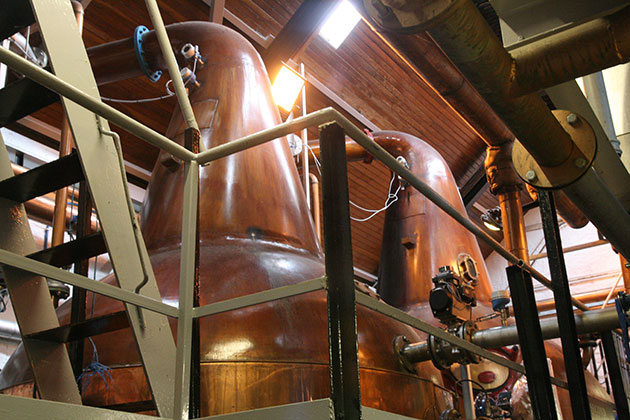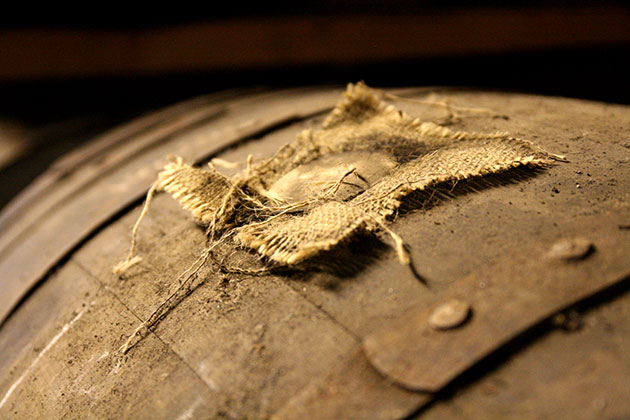Visiting distilleries is rarely anything less than a pleasure and a recent trip to the small, East-Highland distillery of Balblair was far from an exception. The rolling landscape of Ross-shire, persistent Highland rain and warm, bright eyed welcome of the staff on such a trip is instantly disarming in its charm, but as a somewhat hardened and faintly cynical whisky lover there is always a sense that things may be less than they seem.
This critical eye of concern is evident all over the whisky world, be it a blogger lamenting the loss of staff and weather beaten worm tubs or the misty eyed, pipe smoking malt-scribe mourning the fading memory of a dramming bell. Such romanticised, evocative regrets are often more than mere wistful idealism though, after all for many a bottle backed by a quaint highland tale of history and permanence there is a computer, an expansion plan and sadly, compromises in quality.
As with all things in life perhaps, the reality lies somewhere in the grey and while things may be far from ideal, for the whisky geek at least, in the industry it can be all too easy to pass over those that are fighting for quality and simply dismiss them amongst a haze of smoke screens and mass marketing. This brings us to Inverhouse, the Scotch production arm of Southeast Asia’s International Beverages since 2001, and the owners of Balblair, Old Pultney, Knochdhu (An Cnoc), Speyburn and Balmenach. Over the last ten years Inverhouse have walked a difficult line between developing its brands through a strong programme of rebranding, whilst retaining an obvious commitment to quality. Its distilleries have remained small, relatively unpressurised and much support has been offered to improve plant and facilities.
As big business, large-scale production, centralized warehousing and efficiency of output encroach upon a given distillery’s individuality, the old bugbears of chill-filtration, e150 colouring and minimal bottling strength remain ever-present irritations. Small victories in this area can be unduly overlooked, and Balblair must clearly be one of them. The distillery’s current commitment seems to sway towards those consumers wishing to avoid such meddling of the spirit, as the single malt continues to be bottled in relatively small, vintage-based batches that are uncoloured, non-chill filtered and offered at a minimum of 46%abv.
This stance is built on a market that is both better educated and discerning: the 15% of production that is intended for single malt is dunnage matured on site and may ultimately be destined for drinkers that know their Glencairn from their tartan teatowel. As long as this market of malt-heads continues in its demanding nature, being willing to pay for these presumed marks of quality we can hope for this trend to continue, but to ignore the growing pressure that Inverhouse’s distilleries must be beginning to feel would be foolish. Whilst International Beverages have undoubtedly handled their Scotch distilleries with foresight and understanding up to now, the stresses upon those running the sites for greater output and profitability as the brands take root and begin to truly develop, must surely be growing
This brings us back to the bright eyes, firm handshakes and honest smiles that greeted us as we stepped from the coach, piled into the distillery for a bacon sandwhich, shared laughs and waited anxiously to explore the home of that malt in the fancy, swirl embossed bottle. You see, for every dubious assertion that spills from the pen of a marketing executive, there are many ideas forged in reality that may sadly be dismissed until we stand in such a place, begin to truly know a given whisky and more importantly those that make that spirit what it is.
In the end it is distillery managers like Balblair’s charming John MacDonald and the men and women working beside him that protect their distilleries wares, their passion for the place and its make, that when prompted towards compromise by those above them find a way to balance this and safeguard what they share a part in. “Whisky is about people and place,” may well be the words of an archetypal money-driven business man in a black suit, or the bold assertion of an old boy sat astride a cask he filled years before, valinch in one hand, glass in the other. Both would be right. For now it seems that Balblair is firmly focussed on quality of flavour, we can only hope that with the foresight of such a devoted team this remains the case as the sales figures justly rise.


